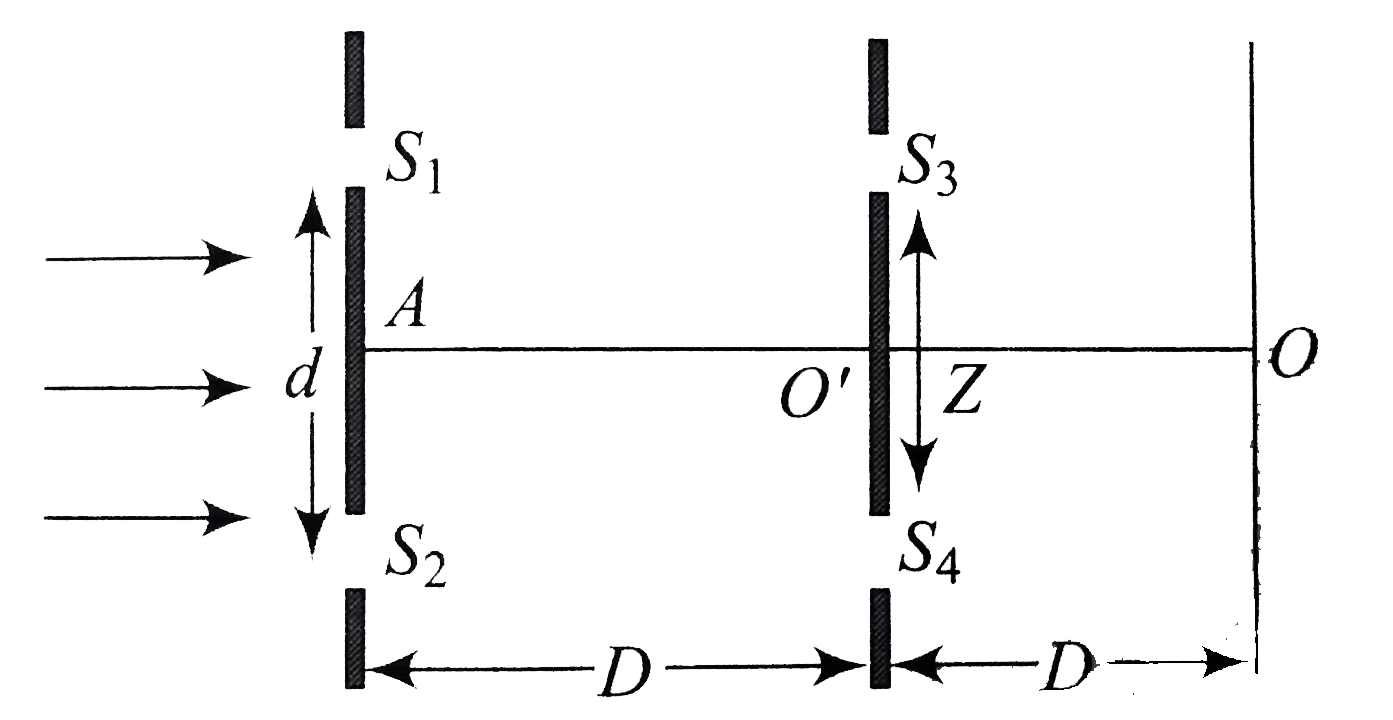In the arrangment shown in fin.

For what minimum value of d is there a dark bant at point O on the screen?
The correct Answer is:a
For dark spot at O,
at P:
at O:
The path difference at P will be zero if . Hence next maxima will front at P.
Fringe width = distance between two consecutive dark to brigth fringes
distance between two consective bright dark fringes
Topper's Solved these Questions
- WAVE OPTICSBook:CENGAGE PHYSICSChapter:WAVE OPTICSExercise:Integer
Explore 3 Videos
- WAVE OPTICSBook:CENGAGE PHYSICSChapter:WAVE OPTICSExercise:Archives
Explore 4 Videos
- WAVE OPTICSBook:CENGAGE PHYSICSChapter:WAVE OPTICSExercise:Assertion- Reasoning
Explore 13 Videos
- THERMODYNAMICSBook:CENGAGE PHYSICSChapter:THERMODYNAMICSExercise:QUESTION BANK
Explore 34 Videos
- WAVESBook:CENGAGE PHYSICSChapter:WAVESExercise:QUESTION BANK
Explore 38 Videos
Similar Questions
Knowledge Check
In the arrangment shown in fin.
 Find the fringe width.AdB2dC4dD3d
Find the fringe width.AdB2dC4dD3dWhat is the minimum value of [x] ?
A−1B0C1D2What is the minimum value of |x|?
A−1B0C2D4
In the arrangement shown in Fig., slits S1 and S4are having a variable separation Z. Point O on the screen is at the common perpendicular bisector of S1S2 and S3S4.

The minimum value of Z for which the intensity at O is zero is
View SolutionIn the arrangement shown in Fig., slits S1 and S4are having a variable separation Z. Point O on the screen is at the common perpendicular bisector of S1S2 and S3S4.

If a hole is made at O' on AO' O and the slit S4 is closed, then the ratio of the maximum to minimum observed on screen at O , if O'S3 is equal to λD4d, is
View SolutionIn the arrangement shown in Fig., slits S1 and S4are having a variable separation Z. Point O on the screen is at the common perpendicular bisector of S1S2 and S3S4.

When Z=λD2d, the intensity measured at O is I0. The intensity at O When Z=2λDd is
View SolutionIn a arrangement shown in the fig.the distance D is latge compared to the separation d between this slits ,find:

The minimum value of d for which there is a dark fringe at the point O.
View SolutionIn the arrangment shown in fin.

Find the distance x at which the next fringe is formed.
View Solution


 .
.